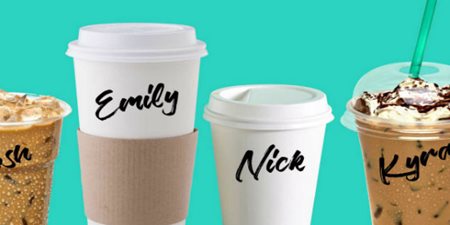Planning A Personalization Strategy for Your Business
By Gabriella Pirrone
May 16, 2018
AgilOne, B2C, Content Strategy, customer experience, Customer Journey, Episerver, GDPR, Mazda, Monetate, Personal Data, personalization, Software, Strategy
The power of personalization is said to be either intrusive or seen as trapping you into a ‘filter bubble’ as some may say - Although, I have a different view and find personalization quite interesting.
When I think of personalization, I think of when I visit a website and I’m trying to find a pair of shoes or a dress, for example, then I navigate away from the website and open up, say, my Facebook account and lo and behold, there is an ad displaying not only the website I visited for that pair of shoes or dress, but the exact product I clicked on.
 So, what does personalization actually mean and how do these websites achieve this? What personalization does is modify your digital experience based on your personal interests and preferences. Concurrently, personalization is used to shape, influence and guide you to make that choice of ‘Hey, don’t forget you visited this site and you were interested in this particular product’
So, what does personalization actually mean and how do these websites achieve this? What personalization does is modify your digital experience based on your personal interests and preferences. Concurrently, personalization is used to shape, influence and guide you to make that choice of ‘Hey, don’t forget you visited this site and you were interested in this particular product’
Why should you plan a personalization strategy for your business? Personalization is a very powerful way to communicate empathically with your customers and tailor your business to their particular needs. A personalization strategy allows you to identify segments of visitors with distinct preferences or needs, then create targeted experiences for them.
To further define what I mean by this I found a really great piece on Optiverse that clearly outlines the steps that should be taken and decided upon when strategizing your personalization decisions for your business:
- Discover your Audience - Audiences are groups of customers you’d like to deliver a targeted experience to. Conceptually, an audience is simply a group of visitors to your site who have something in common. The first step in developing an effective personalization strategy is to discover actionable audiences. This should also include user personas, analyzing customer behavior and targeting technical attributes.
- Plan Experience - Now that you know who you want to personalize experiences for, the next step in your personalization strategy is to determine what you want to say and where you want to say it. It’s also detrimental to test your campaigns and experiences when coming up with a core personalization tactic.
- Run and Monitor your Campaigns - Once you've discovered audiences and planned personalized experiences, you’ve built the essential elements of your personalization strategy. You're ready to run campaigns on your site and monitor the results.
Many companies struggle to manage and mine customer data to both inform customer experience strategies and deliver on the promise of personalization as well as struggling with under-utilized data. To go in-depth, something I found extremely interesting was how DAVIDsTEA, one of the largest Canadian-based specialty tea boutique’s used their loyalty program data to change their user experiences and results.
Omer Artun, CEO of AgilOne, a customer data platform for B2C enterprises, definitely made a great point when he said “It’s not just about improving the customer experience with data. It’s about identifying high-value customers, and personalizing to get better engagement for specific customer segments.
I think DAVIDsTEA really recognized that their customer is the focus of the brand. It’s all about the individual experience. I think that’s what they were really trying to achieve. That led them to ask: 'Okay, we have scores; we have a great product, but now we need to really understand who the customer is, what they’re looking for and how they behave.'”
Catherine Laporte, Head of Marketing and E-Commerce at DAVIDsTEA really hit the nail on the head and responded with “Whether it’s online or in a store, that means a lot of data is being collected – but there was nobody to really look at it, analyze it and really power back with it.
The challenge we’ve been having was: how do you power this data? How do you use it to fuel the rest of the organization? So not only in a customer standpoint, but also from a product standpoint – to make business decisions on a daily basis?”
Monetate and AgilOne Team Up to Deliver Smarter Personalization
A few months ago Monetate, the worldwide leader in personalization software for consumer-facing brands, announced a strategic partnership with AgilOne, the premier customer data platform for B2C enterprises. The announcement stated that with this partnership, “Monetate will provide clients with smarter personalization – including rich, comprehensive customer profiles, orchestrated omnichannel engagement, and unparalleled intelligence on who customers are and what they need right now – so brands can match the right content with the right individual to drive engagement, conversions, and revenue lift.”

To summarize the report:
Monetate’s partnership with AgilOne arms marketers with high quality data and easy-to-understand insights. Several joint customers are already experiencing the benefits which include:
- Online/offline customer insights: Gain a single view into customers’ digital and in-store activities across the entire journey. Better attribute behaviors to purchases and identify customer patterns for personalized marketing by removing information silos.
- Customer value analysis: Combine data captured in stores with digital activities to identify current and potential high-value customers. Understand key metrics such as lifetime value and average order value (AOV) as they apply across channels.
- Consistent, orchestrated personalization across engagement channels: Ensure consistent messaging, experiences, and offers at the individual level across all channels. Deploy a broad set of capabilities directly at the point of customer engagement or embed personalization within key proprietary systems.
- Learn, improve, and scale what works: Test different approaches and learn how and why each approach resonates with some customers more than with others. Deploy automation to scale efforts to reach more customers and amplify results.
Mazda Uses Episerver For Their Personalization Strategy
My colleague Laura Myers recently attended Episerver Ascend 2018 and had the chance to sit down with Marcus Jones, Head of Digital Governance at Mazda Motor Corporation to discuss his thoughts on personalization and digital experience for their business.
As Laura mentions: "with Mazda being such a massive global brand, Marcus let us know there was no one size fits all for their consumer base so leveraging the power of personalization is key to their strategy and one of the reasons he brings up first as to why Episerver is a great fit for them":
“What we understand from a consumer perspective is that we can’t create a onesize fits all for our user base, we need to make sure it’s relevant and it’s something that makes sense in relation to the user journey online that they have experienced themselves” says Marcus.
“Within the purchase consideration cycle, you might have somebody that’s just interested, their not ready to go into their showing environment but we can still serve them content that’s relevant for their needs and so for that perspective its very different to somebody who is almost at that test drive phase and understanding that we can set the criteria in relation to defining the different visitor groups and personalize the content means that we then got a greater opportunity to achieve success in helping them to achieve their final goal.”
Ending Notes
Using personalization and creating those meaningful 1:1 interactions really is the Holy Grail for marketers. Knowing your audience and what they are looking for will set the tone for your business and its objectives. According to the Digital Marketing Association, 77 percent of brands believe real-time personalization of their marketing is crucial, yet 60 percent of marketers still struggle to personalize content in real time.
Obviously personalization depends on gathering and using personal information which leads to the major privacy issues regarding the General Data Protection Regulation GDPR that we’ve unceasingly been hearing about. With the GDPR coming into effect in little over a weeks’ time, it’s comes as no surprise that when I’m online shopping now and visiting the same sites that I was before the GDPR frenzy, I’ve been greeted with pop up ads asking me to agree to their EU Cookie Law.

Gabriella Pirrone
Gabriella is the Digital Marketing Assistant for CMSC Media. She brings a wealth of knowledge from not only a CMS perspective but also content, SEO and eCommerce. She enjoys everything social media and staying ontop of the latest trends in the digital marketing world.